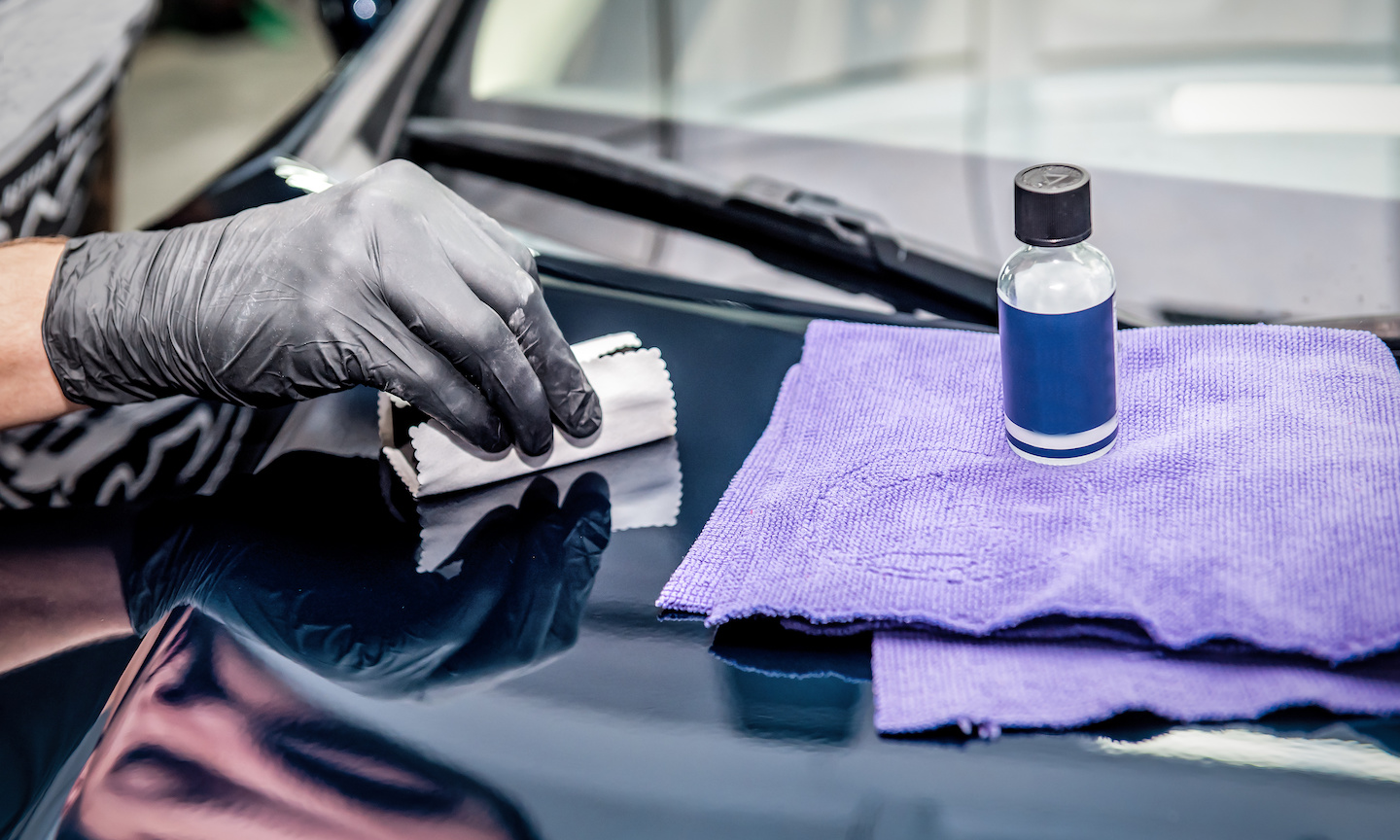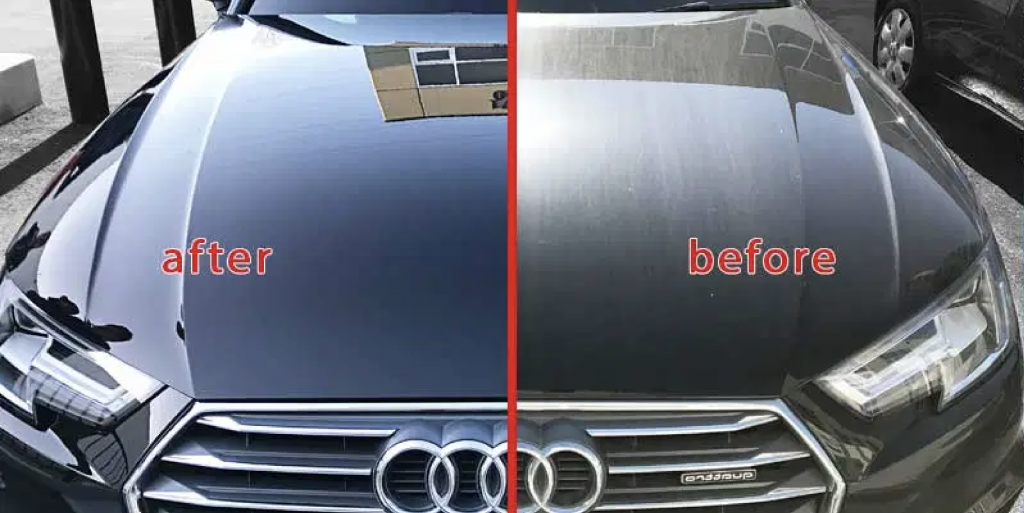Premium Services at Conforti Auto and Marine Detailing Ceramic Coating for Your Vehicle
Premium Services at Conforti Auto and Marine Detailing Ceramic Coating for Your Vehicle
Blog Article
Just How Detailing Ceramic Covering Improves the Longevity of Your Auto's Paint
Ceramic finish has actually emerged as an essential modern technology in vehicle detailing, offering a resilient remedy for maintaining the stability of your car's paint. Understanding the details of exactly how ceramic coating jobs and its advantages over traditional wax can supply beneficial understandings for automobile owners.
What Is Ceramic Covering?
Comprehending the safety benefits of ceramic covering starts with acknowledging its composition and performance. Ceramic finishing is a fluid polymer related to the external surface areas of vehicles, largely made to boost and shield auto paint. The vital element of this finishing is silicon dioxide (SiO2), which is originated from all-natural products like sand. This compound forms a solid chemical bond with the factory paint, creating a protective layer that is both sturdy and hydrophobic.
The finishing's application entails precise preparation of the lorry's surface, which need to be cost-free from pollutants, scrapes, and flaws to guarantee ideal bond. When used, the ceramic finishing cures to develop a rigid guard that can stand up to various ecological variables, consisting of UV rays, chemical stains, and oxidation.
In addition, ceramic finishes are not merely surface-level treatments; they penetrate the paint to provide a lasting protection. This functionality extends the life expectancy of the automobile's aesthetics while maintaining its value with time. Comprehending these fundamental aspects of ceramic finishing is vital for cars and truck owners looking for effective options for paint conservation and improvement.
Advantages of Ceramic Finish
The benefits of ceramic finishing expand far beyond its basic protective features. Unlike standard wax or sealants, ceramic layers produce a solid bond with the auto's paint, allowing it to endure environmental threats such as UV rays, acid rain, and roadway salt.
Furthermore, ceramic layers use hydrophobic buildings, suggesting they fend off water and impurities. This particular not only makes the vehicle easier to tidy yet also decreases the regularity of washing, saving both effort and time for cars and truck owners. The glossy surface created by the finishing prevents dust and grime from sticking, enhancing the automobile's total cleanliness.
Additionally, ceramic finishes enhance the depth and clarity of the paint, providing lorries a glossy finish that is visually striking. This visual enhancement even more adds to keeping the car's resale worth, as a well-maintained outside is a significant marketing point for possible customers. Generally, the advantages of ceramic layer make it a worthwhile investment for any individual looking to shield and enhance their lorry's paintwork.
Exactly How Ceramic Coating Works

The covering's hydrophobic homes ward off water and dirt, preventing the accumulation of crud on the surface area. This not just makes the automobile simpler to clean yet additionally minimizes the probability of scratches and swirl marks caused by typical cleaning techniques. The ceramic layer acts as a shield versus UV rays, which can create fading and oxidation over time.
When treated, the finishing shows remarkable resistance to chemicals, including road salts, bird droppings, and tree sap, which can or else harm the paint. The longevity of ceramic coatings can last for a number of years, depending upon factors such as upkeep and environmental conditions. Generally, the chemical bonding procedure of ceramic coatings offers a robust protection that keeps the stability and appearance of a car's paintwork.
Comparing Ceramic Coating to Wax
Contrasting ceramic finish to standard wax exposes significant distinctions in efficiency and long life. While both products aim to protect an automobile's paint, their make-ups and resilience established them apart. Wax, official website normally made from natural carnauba or synthetic materials, gives a short-term shield that typically lasts just a couple of weeks to a couple of months, depending upon environmental problems and maintenance regimens.
On the other hand, ceramic finishes are sophisticated remedies composed of not natural materials that bond chemically with the car's paint. This develops a robust, semi-permanent layer of security that can withstand for several years. Therefore, ceramic coverings supply remarkable resistance to UV rays, chemical stains, and physical abrasion, dramatically minimizing the risk of oxidation and fading.
Additionally, the hydrophobic properties of ceramic coverings make sure that water grains up and rolls off the surface area, making it harder for dust and grime to adhere. This simplicity of cleaning is a significant advantage over wax, which can draw in dirt and require regular reapplication. Inevitably, for vehicle owners looking for long-lasting security and boosted visual appeal, ceramic finishes offer a more reliable alternative to conventional anchor wax items.
Maintenance Tips for Durability
Correct upkeep is vital for optimizing the long life of a ceramic covering. Make use of a pH-balanced car shampoo to avoid degrading the layer, and prevent automated cars and truck washes with rough brushes that can trigger micro-scratches.
To maintain the hydrophobic homes of the ceramic finish, consider applying an upkeep spray or booster especially made for ceramic coverings every few months. This will strengthen the safety layer and enhance water beading.
In addition, article source stay clear of revealing the layered surface area to severe environmental problems whenever feasible. Auto parking in shaded locations or making use of a vehicle cover can protect against UV damages and contamination from bird droppings, tree sap, or commercial results.
Lastly, examine the finish occasionally for indications of wear or damage. If you discover a decrease in hydrophobic behavior, it may be time for a professional reapplication. By adhering to these upkeep suggestions, vehicle owners can significantly expand the life and efficiency of their ceramic covering, making certain that their vehicle's paint continues to be protected and visually appealing for years ahead.
Verdict

Report this page